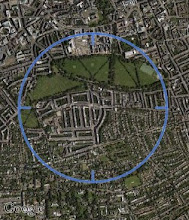This lobby group has sent out some info. You can get more here http://bbag.blythbridge.org.uk/
Talla Main - Potential Threat to Edinburgh’s Water Supply
Where is the Talla Main……
The water supply for Edinburgh reaches the city by way of the Talla Main Aqueduct.
The land which ‘houses’ the Aqueduct is the Blythbank Estate which is situated close to the villages of West Linton, Romanno Bridge, Mountaincross and Blyth Bridge. It is owned by the largest egg producer in Scotland, Glenrath (Farms) Ltd and the company have lodged a planning application which, if granted, would create the largest free range egg farm in Europe.
Who we are…..
The BlythBank Action Group (BBAG) was formed by people living in the surrounding villages and we have combined our various areas of expertise to attempt to identify all the risks this development could create – environmental, economic and recreational. The scientists on the Group have also consulted one of the foremost experts on water pollution and management of water, Jane Shields of Living Water and the attached information should also provide vital information for the Council’s own experts.
Why we’re writing to you……
The fact that this will be the largest free range egg farm in Europe means it would be unprecedented in size and therefore any risks associated with this form of agriculture are difficult to quantify as there is nothing to compare it with at this time. The potential to pollute the water supply for the surrounding area and Edinburgh is a risk that needs to be fully evaluated now – before the application is granted.
Glenrath (Farms) Ltd already have one industrial sized shed on the site and the current planning application is for another nine. Intensive egg production on this scale must be fully assessed for public safety. For example, a key element is the amount of manure which free-ranging hens will drop outside their sheds: this has not been factored into any risk assessments by the developer or their agents – and more importantly, nor has it been assessed by any of the Statutory bodies. This is critical as the sheds are to be sited along the line of the Talla Main, and this loose manure will be able to make its way into groundwater which is collected by the Aqueduct on its way to the city.
You will no doubt be aware that manure is a well-known carrier of a number of zoonotic diseases – Cryptosporidium being just one of these. Other soluble components of manure are nitrates and phosphates. Intensive farming also uses
a number of veterinary products such as antibiotics – this area is already intensively farmed with both dairy cattle and sheep.
If the development was approved, this would result in nearly 1/3rd of a million free range laying hens living along the line of the Talla Main Aqueduct. We believe this must give cause for concern, due to the strategic importance of the aqueduct and its apparent vulnerability.
The Talla Main Aqueduct…..
The Aqueduct was built in 1900 and some 27 million gallons of raw water per day flows from the reservoirs in the Borders hills to the treatment plants in Edinburgh. At the time of construction, novel techniques with concrete were used, but in the last ten years or so, cracks have developed which have required remedial repairs. It is not a closed pipe, so groundwater is also gathered as the water is carried to the City. The most recent incident occurred on Thursday 4th October 2007, when the main burst through the surface of the A701 at Blyth Bridge.
What you should know ….
The enclosed information, from our own research and that of our consultant, outlines some of the main hazards and BBAG are happy to answer any questions which may arise.
BBAG had intended to delay raising public awareness of this issue until the full process of consultations between developer, Scottish Borders Council and statutory consultees was completed, and the Environmental Statement produced by the developer had been fully appraised. However, many of the initial concerns raised by both Statutory and non-Statutory bodies remain unanswered and we believe we now have no option but to bring our concerns into the public arena. There has been no risk assessment carried out to demonstrate, beyond reasonable doubt, that the hazards identified are avoidable in the long term.
We are also concerned that Councillors will be put into the position of making a decision without being fully-informed, and without the vital information which an adequate risk assessment would provide. A risk assessment needs to be carried out now and the results made available for everyone that could be affected, and this should include Edinburgh City.
The planning application is well advanced and is likely to go for determination by the Planning and Economic Development Committee at Scottish Borders Council within the next month or two.
What you can do….
If you share our concerns, you should contact your local Councillor or MSP to alert them of your concerns. You can also write to Scottish Borders, the planning application reference is: 06/02193/FUL. Or you could also write to Scottish Water to share your concerns.
BBAG can be contacted at: www.bbag.org.uk if you have any questions or comments.
[Since going to print, we have been advised that the application will not go to the October Planning Committee – there is still time for you to take action.]
This blog is where you will find community council information, including meeting times, minutes and agenda. Do please comment on postings.
Subscribe to:
Post Comments (Atom)


No comments:
Post a Comment